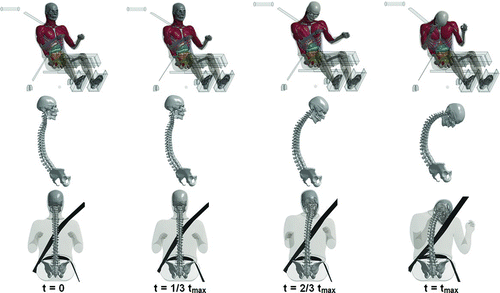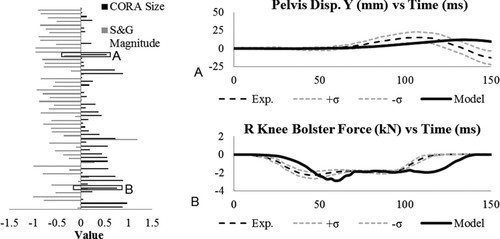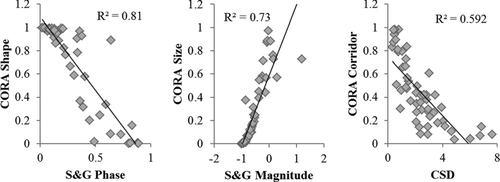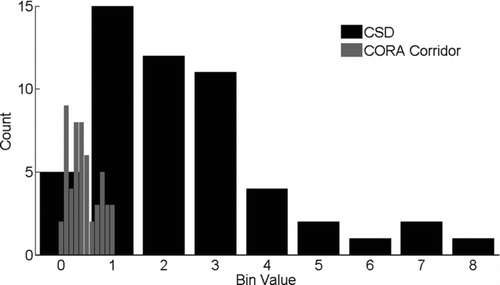Figures & data
Table 1 Comparison of objective evaluation methods used in the study
Fig. 1 Study flowchart. Results from 53 channels of data were applied to each of the methods above. Therefore, at the end of this part of the study there was a value of each of the 7 metrics listed above for 53 time-valued signals (color figure available online).

Fig. 2 Time lapse images showing the kinematics of the GHBMC M50 model. The top row indicates overall body motion and the second and third rows show spine kinematics from the side and back, respectively (color figure available online).

Table 2 Cross-plot matrix for comparison study
Table 3 Results from the 21 regressions conducted with the statistically significant correlations highlighted
Fig. 4 Left: Bar chart showing that SGM can be less than zero while CORA size is always positive. Right: (A) a case where SGM is negative because, on average, the model response is smaller than the experimental mean; (B) a case where both SGM and CORA size are positive. Both the SGM and CORA size factor do not consider the phase shift that is apparent in either A or B.


